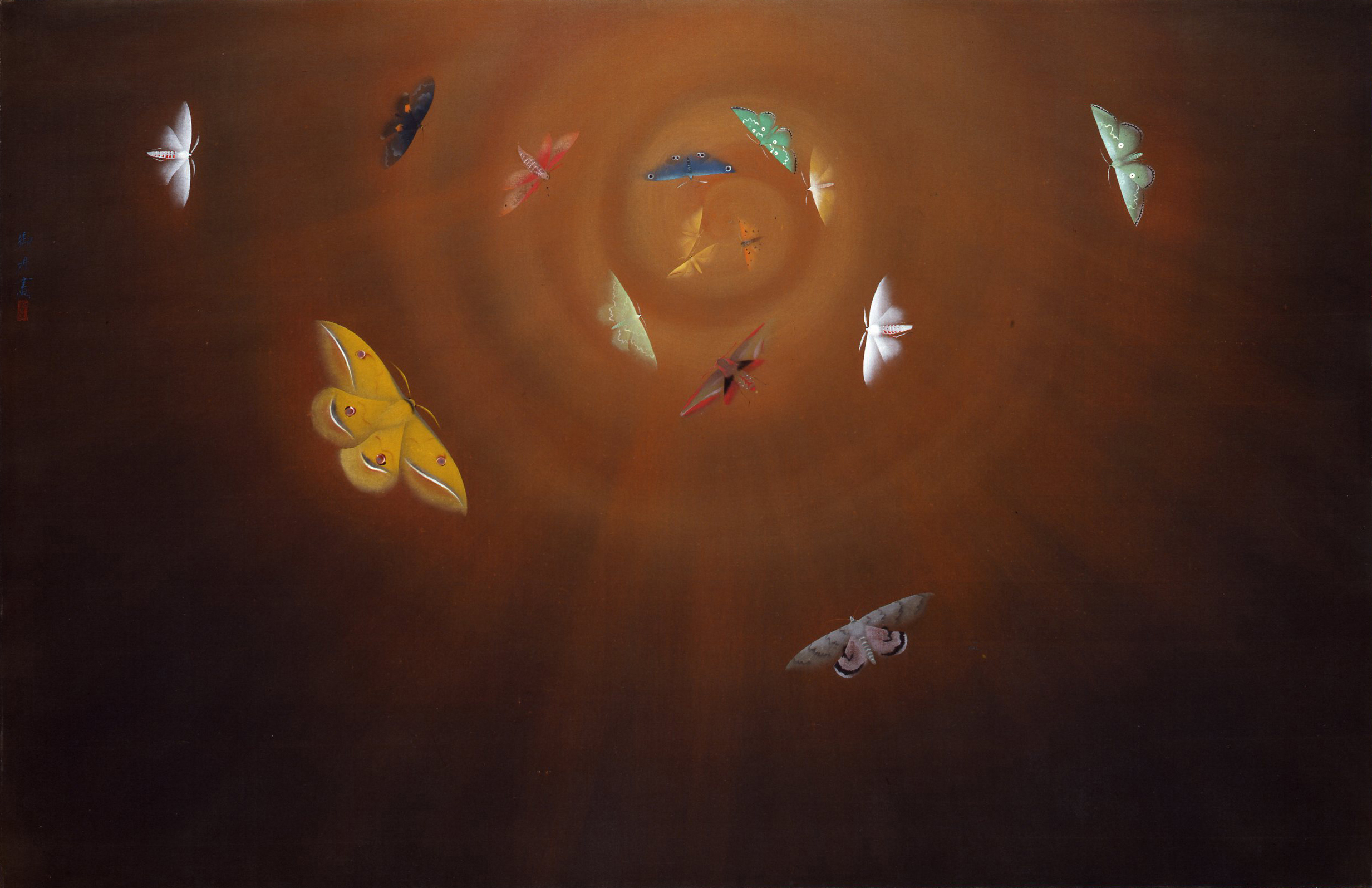Past Exhibition
120th Anniversary of the Japan Art Institute Exihibition:
Challengers in Nihonga
―Taikan, Shunsō, Kokei, and Gyoshū

Hayami Gyoshū,
Two Themes on Insect Life: Moths Dancing Around the Light,
Yamatane Museum of Art
15 Sep (Sat.) – 11 Nov (Sun.) 2018
(Closed on 18 Sep, 25 Sep, 9 Oct and on Mondays, open on 17 Sep, 24 Sep and 9 Oct.)
Hours:10 am - 5 pm (Last admission at 4:30 pm)
Admission Fees: Adults: 1,000 [800] yen; university and high school students: 800 [700] yen; middle school and younger children: free of charge
*Figures in brackets are for groups of 20 or more, advance tickets, repeaters with used tickets for this exhibition and those who are wearing kimono.
*Disability ID holders and one person accompanying them are admitted free of charge.
Organized by: Yamatane Museum of Art and Nikkei Inc.
Approximately 50 works in total are to be displayed.
Exhibition Overview
From the end of the nineteenth century on, the Japan Art Institute has consistently exercised leadership in the world of nihonga. This year, to commemorate the 120th anniversary of the founding of the institute, the Yamatane Museum of Art is holding an exhibition that traces the activities of painters among its members, focusing particularly on those with spectacular achievements: Yokoyama Taikan, Hishida Shunsō, Kobayashi Kokei, and Hayami Gyoshū.
The Meiji period saw artists in quest of nihonga that would be suited to their new age. In that context, Okakura Tenshin, having resigned from the headship of the Tokyo Fine Arts School (now Tokyo University of the Arts), founded the Japan Art Institute in 1898 with the help of Taikan and other young artists. After a period of hardships, during which the institute was based in Izura, Ibaraki prefecture, Taikan and others revived it in 1914. Since then, the Japan Art Institute has been the setting in which many artists have taken up the challenge of pioneering new aspects of nihonga while learning from the classics.
Among them, particularly noteworthy are Taikan and Shunsō, who were among the founding members of the institute, and Kokei and Gyoshū, leaders of the next generation. Taikan continued to be a central presence in the Japan Art Institute after its revival, while Shunsō produced many masterpieces during the brief sixteen years of his career as a painter. Kokei established an elegant style with an economical use of line and clear colors, while Gyoshū, who was about a decade younger, constantly challenged creating fresh, innovative nihonga, again and again.
This exhibition, focusing on those four artists, introduces superb works by members of the Japan Art Institute, from artists active in its early days to exemplars of the contemporary nihonga art world. Works from the museum collection being exhibited include all eight paintings from Scenes from the Legend of Kiyohime, the masterpiece for which Kokei was highly acclaimed from its showing at the Japan Art Institute exhibition (the Inten), and a special viewing of Gyoshū’s Camellia Petals Scattering, the first painting from the Showa period to be designated an Important Cultural Property (October 16 to November 11). The exhibition is composed of three sections: “Origins of the Japan Art Institute,” “The Reestablished Japan Art Institute,” and “The Reestablished Japan Art Institute after World War II.”
Through paintings by members of the Japan Art Institute from the Yamatane Collection, this exhibition provides an opportunity to trace the trajectories of artists who continued to address new possibilities in opening up new terrain in nihonga.
*All works are the property of the Yamatane Museum of Art.
 Oyama Katashi, The Island of Amakusa: A Baptismal Ceremony, Yamatane Museum of Art |
 Tabuchi Toshio, Embanked Village, Yamatane Museum of Art |















